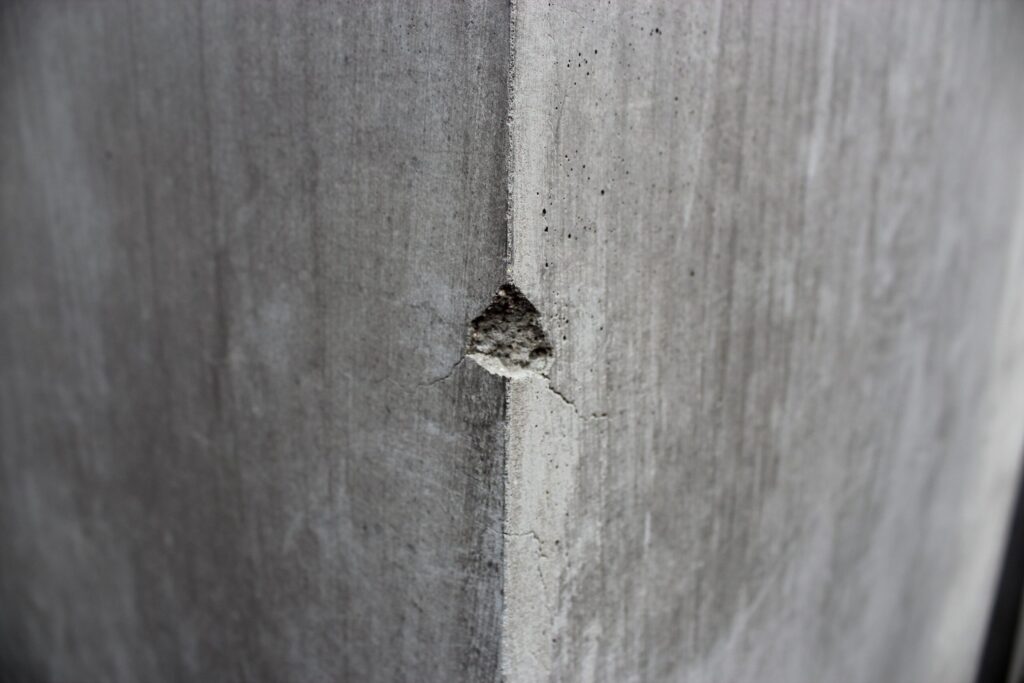
What is “Chipping Concrete”? A Back-to-Basics Explainer
What is “chipping concrete”? The question might be something of a no-brainer for those who work in concrete and construction. In truth, however, the topic isn’t all that straightforward.
At General Chipping, for instance, our concrete chippers come across people almost daily who have never heard of the work we do. And if we have that many people asking us “So, what IS chipping concrete?”, we can assume there are others out there asking the same thing.
In an effort to clear up confusion — and help keep concrete companies, construction crews and clients all on the same page — we’ve decided to go back to Concrete Chipping: 101 on our blog.
Read on for a simple overview of what ready mix chipping services are, the important impact those services have on your redi mix truck drums, central mixers and cement storage silos — and insight into the other kind of “chipping concrete”, too.

The Question on Everybody’s Mind: What is Chipping Concrete?
Of course, there are two very different definitions for chipping concrete. If you’re interested in the definition with which the general public is most familiar — visible damage to poured material — scroll to the bottom of this post. In this section, we’ll focus on the concrete chipping our crew carries out each day.
- A Brief Definition of Concrete Chipping: Concrete chipping is the process of clearing dried concrete from the walls of a company’s redi mix truck drums, cement storage silos and central mixers. It’s an incredibly niche offering — one only a handful of companies nationwide provide.
- How Concrete Chipping Works: During concrete chipping appointments, trained crews armed with PPE such as ventilators, hardhats and eye protection will physically enter ready mix truck drums, central mixers and cement silos. Once inside, they use handheld jackhammers to chip away at the dried material — and then usher it safely out. The end result is a fleet of drums, silos and mixers that are free of excess material, cleared of clogs and ready for whatever concrete and construction projects are to come.
- Why Concrete Chipping is Important: Excess buildup can slow a drum’s rotation, throw it off-balance or lead to complete breakdowns that put the brakes on a company’s work. And that can hit a bottom line hard. (Remember, every concrete pour results in some material being left behind.) As it relates to cement silos, having trained pros get rid of clumped material helps keep the cement companies rely on flowing, and their work moving forward as it should.
The concrete chippers on our team maintain schedules that are very different from the average worker’s. If you’re curious about what the job entails, take a look at our A Day in the Life of a Concrete Chipper blog post.
A Few Things You Should Know About Concrete Chipping
- Chipping Concrete is Incredibly Dangerous Work: As we mentioned above, you won’t find many companies chipping concrete in the U.S. That’s partly because of the associated safety risks. Flying debris, confined spaces and air quality concerns are just a few of the issues crews like ours are up against. For these reasons (and many others) you should NEVER allow an untrained individual to take on such work. Concrete chipping should be left to trained and licensed crews.
- Companies Should Book Appointments Every Three Months: This is the ideal timeline for most redi mix truck drums and central mixers, but things will vary slightly, depending on factors such as a crew’s volume of work. Because wet concrete isn’t actually flowing through cement storage silos, those cleanings can take place on a slightly extended schedule if need be. In our experience, however, it’s easier to take care of all three tasks at once.
- Many Concrete Chippers Aren’t Licensed to Do the Work: We recommend asking potential concrete chipping crews for proof of licenses, insurance — and insight into any ongoing training they require. Doing business with a company that doesn’t have those things in order can place you in a tough spot if its valuable vehicles were to become damaged during the process, or if someone were to get injured on-site. (Rest assured that, at General Chipping, we’ve got our ducks in a row.)
On to the Other Answer to the “What is Chipping Concrete?” Question
Now that we’ve covered the basics of the concrete chipping work crews like our take on each day, let’s look at the flip side of the coin. Namely, let’s dig into the cosmetic issues that can plague sidewalks, parking lots, roadways and the like.
Chipped concrete can cause frustration in several ways. Not only can it create uneven surfaces that lead to fall risks, but it can also point to potential structural damage. On top of everything else, those cracks can be pretty unsightly, taking away from an area’s overall look.
Here’s a quick overview of three common issues associated with concrete work (and the conditions that cause them).
- Concrete Flaking or Scaling: Surface-level damage that’s more aesthetic than dangerous, although it can lead to trips and falls. This issue indicates issues with the way the wet material was mixed or installed.
- Concrete Spalling: Large portions of concrete separating and falling away from a structure. When spalling takes place along bridges, buildings and similar structures, the falling material can create high-risk safety concerns. Spalling often indicates an issue with the rebar inside the material itself.
- Concrete Cracking: Meandering lines that form along the outside of poured material, and which aren’t typically cause for concern. Cracks can indicate there was too much (or too little) water in a concrete blend. More commonly, however, they happen naturally due to everyday use.
So, what is chipping concrete? (By now you should be fully informed!) We hope the above information helped to answer any questions you — or your clients — might have. If you want to know more, feel free to contact General Chipping! Our team is passionate about our work, and we love educating others about what we do.
